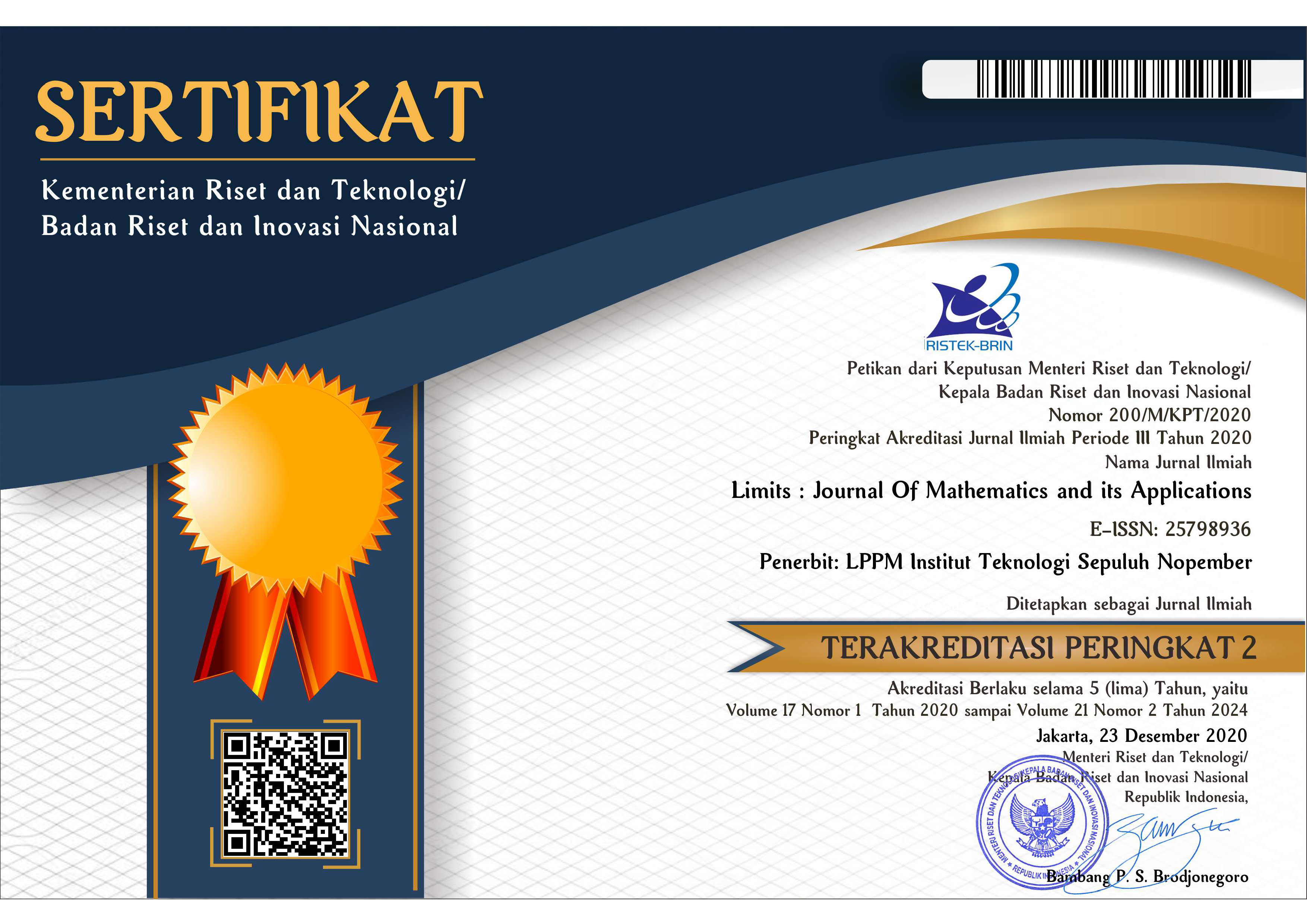Analisis Kestabilan dan Kontrol Optimal pada Model Matematika Penyebaran Penyakit Mumps
Abstract
Keywords
Full Text:
PDFReferences
World Health organization (WHO), 2021, Mumps, Retrieved Oktober 30, 2021, from https://www.who.int/teams/health-product-policy-and-standards/standards-and-specifications/vaccine-standardization/mumps
Marlow, M., Leung, J., & marin, M., 2021, Chapter 9: Mumps Center For Disease Control and Prevention, from https://www.cdc.gov/vaccines/pubs/surv-manual/chpt09-mumps.html.
Centers for Disease Control and Prevention (CDC), 2021, Sign and Symptomps, Retrieved January 26, 2022, from https://www.cdc.gov/mumps/hcp.html.
Gut, J.-P., Lablache, C., Behr, S., & Kirn, A., 1995, Symptomatic Mumps Virus Reinfections, Journal of Medical Virology, 45: 17-23.
Zhou, Y.-J., Yu, J., Wu, Y.-Z., Tian, L., Han, Z., Wang, J., & Chi, F.-L., 2017, The potential dysfunction of otolith organs in, Plos One, 12(7): 1-9.
Mühlemann, K., Rubin, S., & Hviid, A., 2008, Mumps. The Lancet Journal, 371: 932-944.
Li, Y., Liu, X., & Wang, L., 2017, Modelling the Transmission Dynamics and Control of Mumps in Mainland China, Journal of Environmental Reseacrh and Publich Health, 15: 1-17.
Kitano, T., 2018, Dynamic transmission model of routine mumps, Epidemiology and Infection, 147: 1-8.
Pongsumpun, P., 2019, Mathematical Model for Mump Disease in Thailand, Conference on Advances in Science, 12-14.
Ayoade, A., Peter, O., Abioye, A., Aminu, T., & Uwaheren, O., 2020, Application Of Homotopy Pertubation Method, Advances in Mathematics: Scientific Journal 9, 1329–1340.
Peng, Y., Yang, T., & Zhu, Y., 2021, Estimating the Transmissibility of Mumps:A Modelling Study in Wuhan City, China, Frontiers in Medicine, Vol 8.
Mohammadi, H., Kumar, S., Rezapour, S., Etemad, S., 2021, A theoretical study of the Caputo–Fabrizio fractional modeling for hearing loss due to Mumps virus with optimal control, Chaos, Solitons and Fractals, Vol 144.
Driessche, P., & Watmough, J., 2002, Reproduction Numbers and Subthreshold Endemic Equilibria for Compartmental Models of Disease Transmission, Mathematical Bioscience, 180, 29-48.
Brauer, H., & Castillo-Chavez, C., 2010, Mathematical Models in Population Biology and Epidemiology, 2nd Edition., Springer-verlag.
Chitnis, N., Hyman, J. M., & Chusing, J. M., 2008, Determining Important Parameters in the Spread of Malaria Through the Sensitivity Analysis of A Mathematical Model, Bulletin of Mathematical Biology, 70(5):1272.
DOI: http://dx.doi.org/10.12962%2Flimits.v21i1.20053
Refbacks
- There are currently no refbacks.
Jumlah Kunjungan:

Limits: Journal Mathematics and its Aplications by Pusat Publikasi Ilmiah LPPM Institut Teknologi Sepuluh Nopember is licensed under a Creative Commons Attribution-ShareAlike 4.0 International License.
Based on a work at https://iptek.its.ac.id/index.php/limits.






